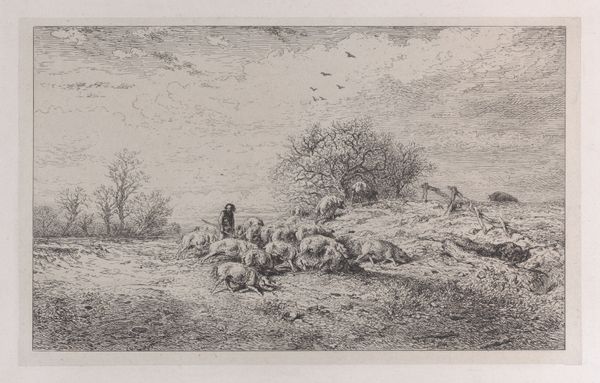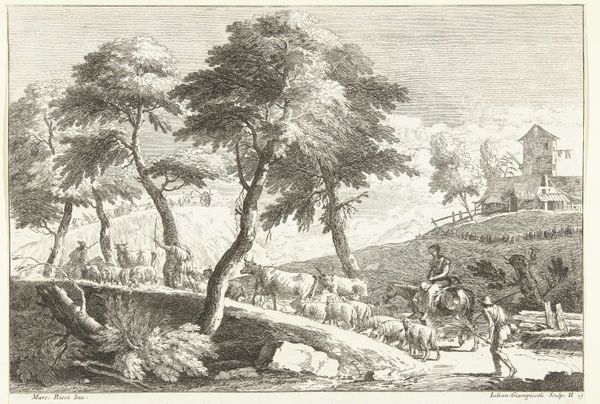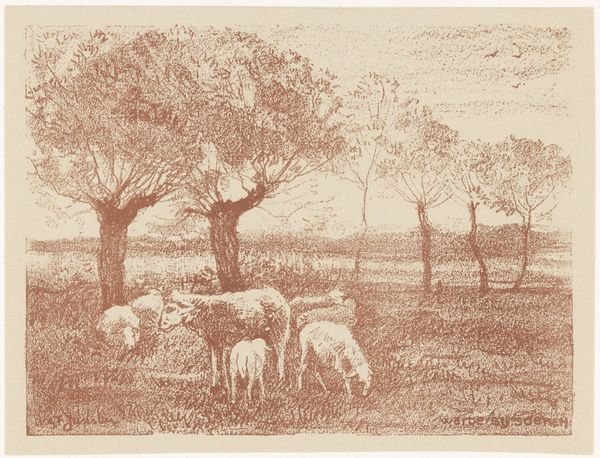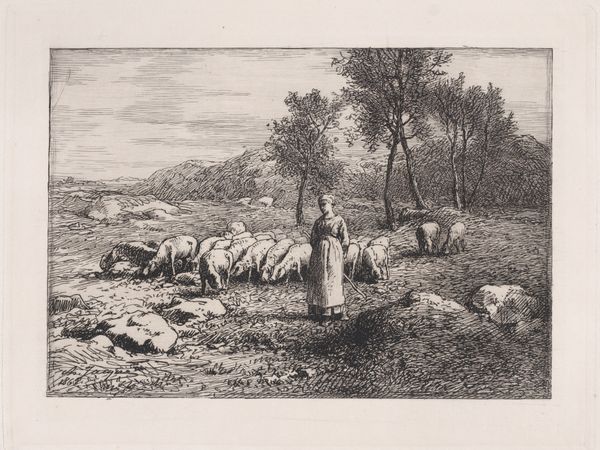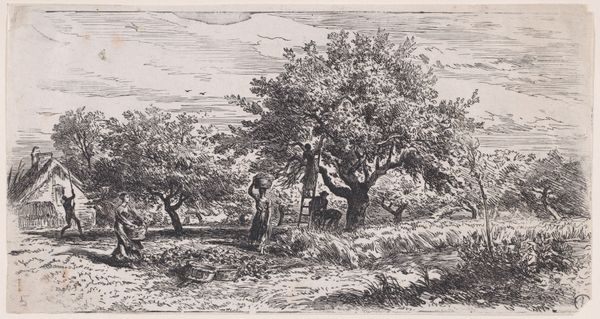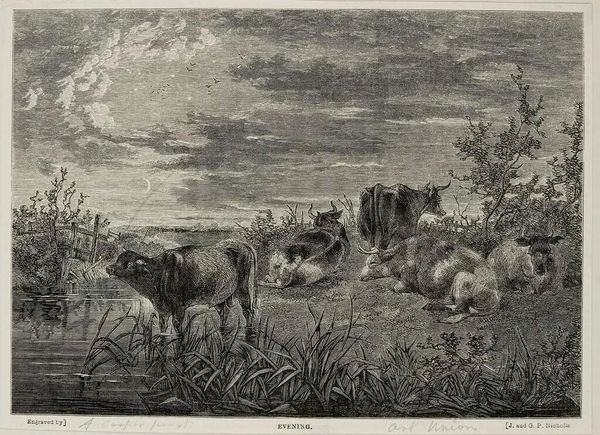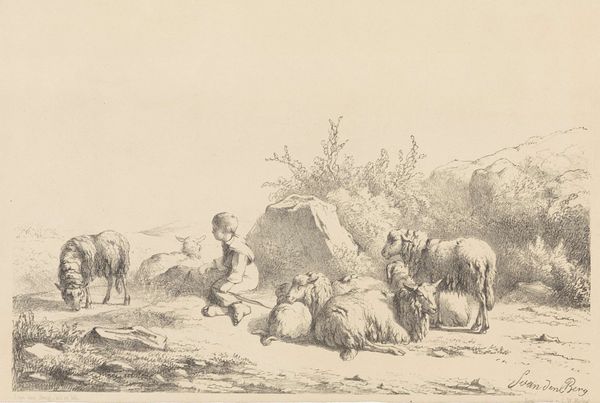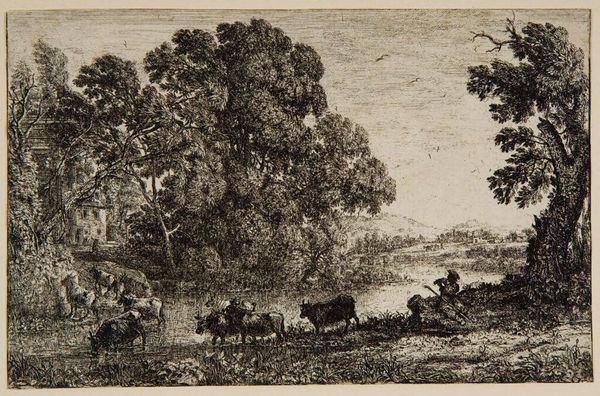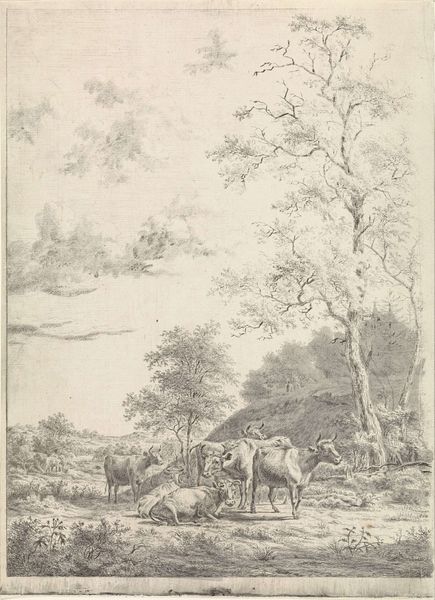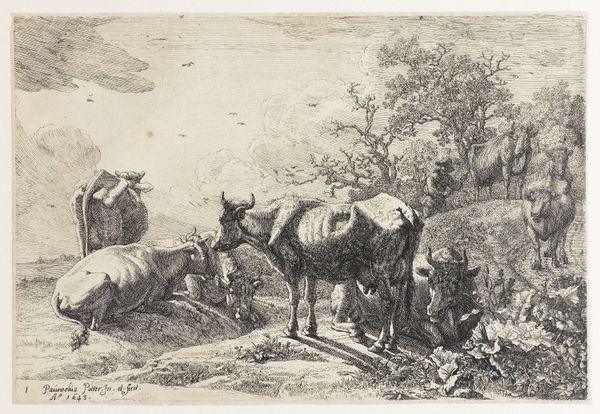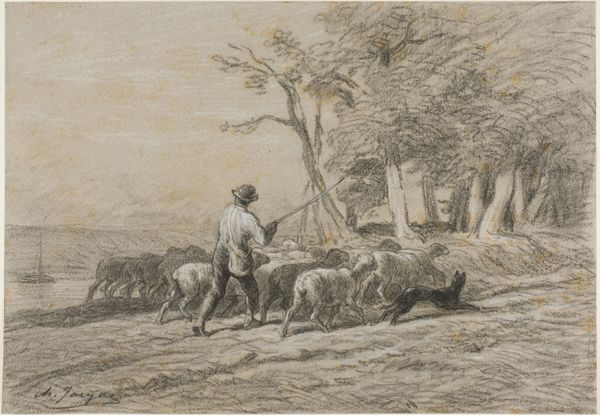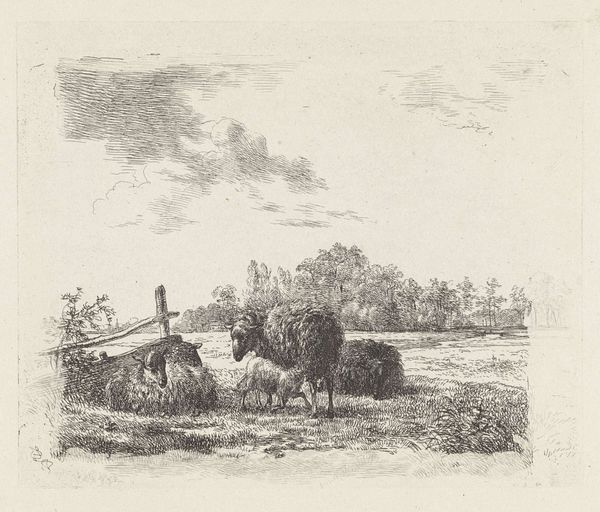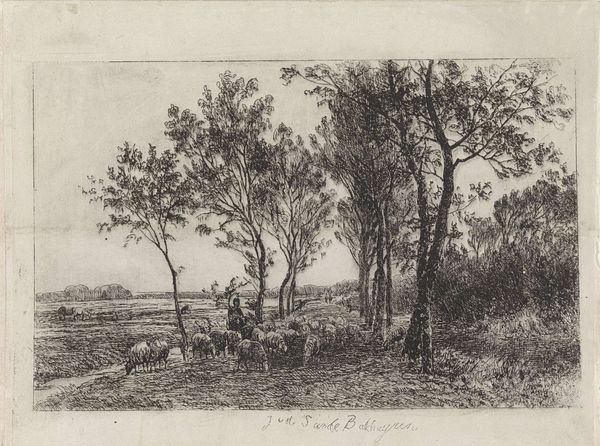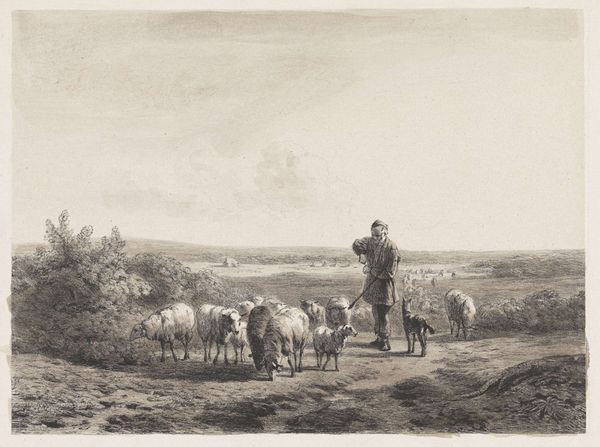
drawing, print, etching, pencil
#
pencil drawn
#
drawing
#
16_19th-century
# print
#
etching
#
pencil sketch
#
landscape
#
pencil drawing
#
pencil
#
realism
Copyright: Public domain
Curator: What a somber scene! This Charles Jacque print, made in 1867, immediately makes me think of bleak midwinter. The monochromatic tones create such a hushed atmosphere. Editor: Jacque's "Winter," yes. And immediately I am drawn to how this image, although depicting rural life, resonates so powerfully with themes of economic hardship in 19th-century France. You can read this landscape as a representation of resource scarcity and the struggle for survival. Curator: It's incredible how such delicate etching can evoke such hardship! See how the stark trees contrast with the figures tending to the animals. The trees symbolize resilience, but the grazing animals hint at how land provides both struggle and resources. Note also, the gathering of what seems to be firewood which further supports ideas of daily fight for survival. Editor: The symbolism here feels intentionally archetypal. Jacque is clearly pulling from familiar imagery—shepherds, flocks, barren trees—creating a narrative deeply ingrained in our cultural memory. The figure on the left resembles depictions of poverty throughout European art. Curator: Absolutely. Look at the lone figure, perhaps a woman, cloaked and almost faceless. This feels less a celebration of pastoral life and more a commentary on the anonymity and isolation of the working class. One sees no other people or buildings. Are they truly alone? What does the geography represent in this isolation? Editor: The use of sheep in this image adds a further layer to these readings. Sheep have historically served as symbols for human faith. The animals' quiet obedience makes it easy for viewers to connect their actions to religion and collective experiences of hard winter and quiet faith. The landscape becomes a stage for broader contemplation about the relationship of nature, mankind, and belief during challenging times. Curator: That adds nuance, doesn't it? I had focused on the somber conditions. I hadn’t explicitly tied them to the traditional connection between the figures with animals, rural life, and the search for something to trust or something trustworthy. But now that you mention it… it makes perfect sense. Editor: Well, looking at this scene from our perspectives now hopefully reveals both a historical snapshot of a certain time but also raises ongoing considerations about work, the struggle to continue on, and our relationship to landscape and spirituality. Curator: Yes, I think analyzing "Winter" from our distinct, but ultimately connected, perspectives gives the work both grounding in its context and timeless meaning for the present. It truly offers something to everyone.
Comments
No comments
Be the first to comment and join the conversation on the ultimate creative platform.
